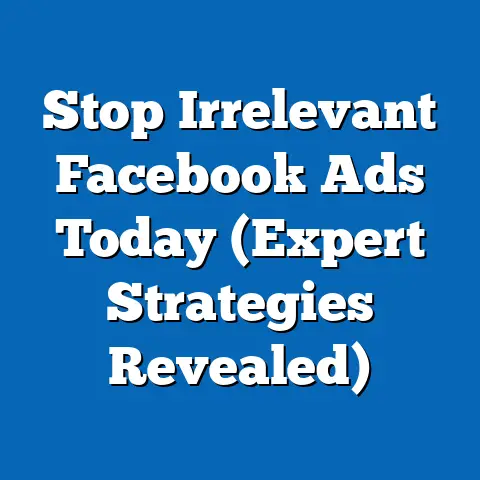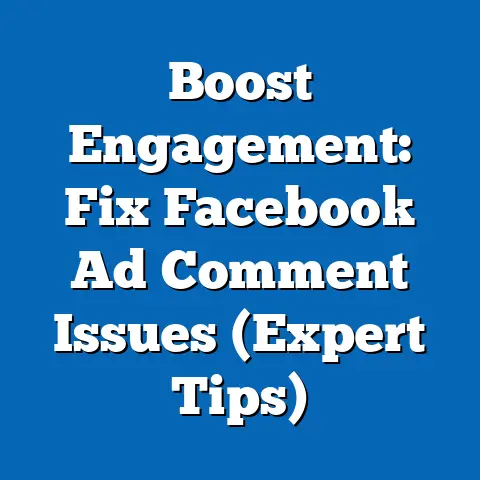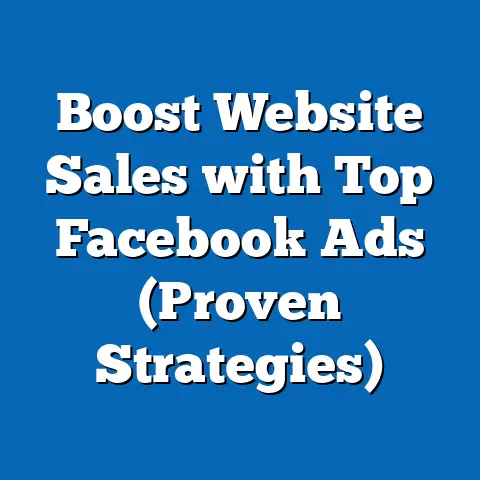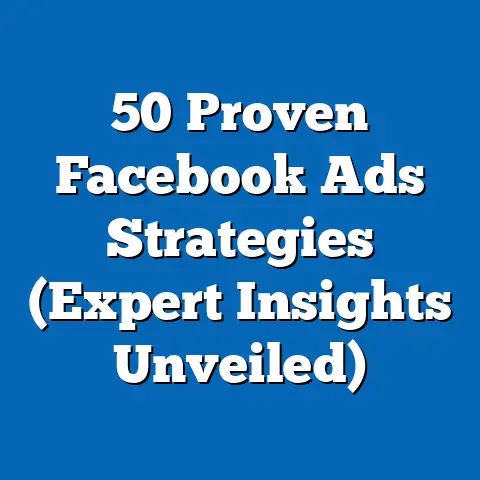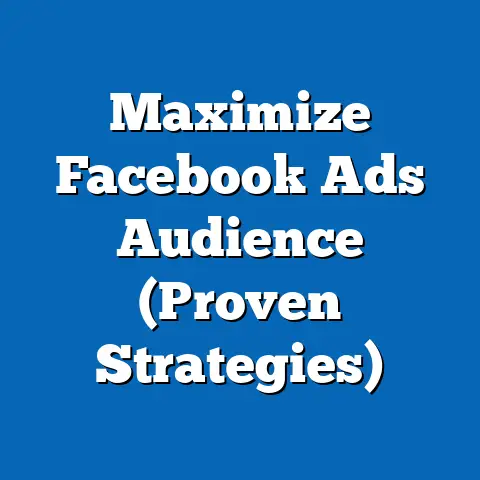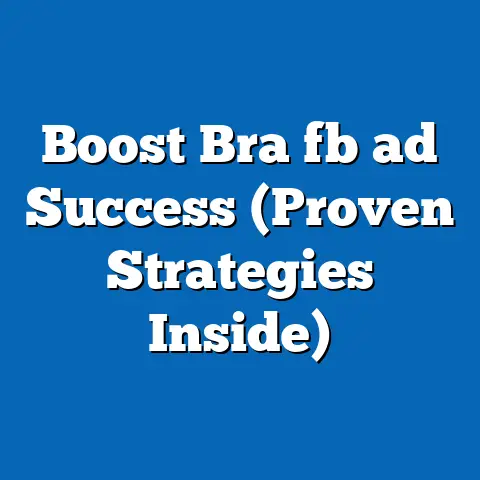Unlock Winning Facebook Ad Headlines (Proven Strategies)
Facebook ads are a powerhouse in today’s digital marketing world. I’ve seen firsthand how a well-crafted ad can skyrocket a business to new heights. But let’s be real: in the endless scroll of Facebook feeds, a dull ad is as good as invisible. The headline is your first, and often only, shot at grabbing attention.
Think about it: you’re scrolling through Facebook, catching up with friends and family, when suddenly, an ad pops up. What makes you stop? What makes you click? It’s often the headline.
Now, if you’re targeting parents or caregivers of children, the stakes are even higher. These folks are driven by a deep, emotional connection to their kids. Tapping into that emotion with a compelling headline can be the difference between a wasted ad spend and a campaign that hits it out of the park.
In this guide, I’m going to share proven strategies for crafting Facebook ad headlines that not only capture attention but also drive engagement and, ultimately, get results. Let’s dive in!
Understanding Your Audience: Speaking to Parents
Before you even think about writing a single word, you need to know your audience inside and out. Who are these parents you’re trying to reach? What keeps them up at night? What are their hopes and dreams for their children?
I’ve spent years analyzing Facebook ad campaigns, and one thing is crystal clear: the more you understand your audience, the better your ads will perform.
Let’s break down the unique characteristics, pain points, and aspirations of parents with children:
- Demographics: Consider age, location, income, education level, and family structure. Are you targeting new parents, single parents, stay-at-home parents, or working parents? Each group has different needs and concerns.
- Interests: What are they interested in beyond their children? Hobbies, travel, cooking, fitness? Understanding their broader interests can help you tailor your messaging.
- Common Challenges: Parenting is tough! What are the common struggles they face? Sleep deprivation, picky eaters, tantrums, balancing work and family? Addressing these challenges in your headlines can grab their attention.
- Aspirations: What do they want for their children? Happiness, success, good health, a bright future? Tapping into these aspirations can create a powerful emotional connection.
Data-Driven Insights
According to recent studies, a whopping 81% of parents turn to social media for advice and product recommendations. That’s a huge opportunity! But it also means you need to stand out from the crowd.
I always recommend doing your own research. Spend time on parenting forums, Facebook groups, and relevant blogs. What are people talking about? What questions are they asking? Use this information to inform your headline creation.
Example:
Let’s say you’re selling a new type of baby monitor. Instead of a generic headline like “Best Baby Monitor on the Market,” consider something like: “Finally, Get a Good Night’s Sleep: The Baby Monitor That Alerts You Only When It Matters.” This headline speaks directly to the pain point of sleep deprivation, which is a major concern for new parents.
Key Takeaway:
Understanding your audience is the foundation of effective Facebook advertising. The more you know about their needs, challenges, and aspirations, the better equipped you’ll be to craft headlines that resonate and drive engagement.
The Psychology Behind Headlines: Tapping into Emotions
Great headlines aren’t just about catchy words; they’re about tapping into the psychology of your audience. They leverage emotions, create curiosity, and offer solutions to pressing problems.
I’ve learned that understanding these psychological principles can dramatically improve your ad performance.
Here are a few key concepts to keep in mind:
- Curiosity: Humans are naturally curious. A headline that piques curiosity can entice people to click and learn more.
- Urgency: Creating a sense of urgency can motivate people to take action now rather than later.
- Empathy: Showing that you understand their feelings and challenges can build trust and connection.
- Value: Clearly communicating the value of your product or service can demonstrate why they should care.
Examples of Psychological Triggers in Headlines:
- Curiosity: “The Secret to Raising a Confident Child (That No One Tells You)”
- Urgency: “Limited Time Offer: Get 50% Off Our Parenting Course Today!”
- Empathy: “Feeling Overwhelmed? You’re Not Alone. We Can Help.”
- Value: “Give Your Child the Gift of Reading: Our Program Makes Learning Fun.”
The Power of Emotional Language
Parents are driven by a deep, emotional connection to their children. They want the best for them, and they’re willing to invest in products and services that can improve their lives.
Use emotional language to connect with these desires:
- Happiness: “Unlock Your Child’s Inner Joy with Our Creative Play Kit”
- Wellbeing: “Protect Your Child’s Health with Our Organic Baby Food”
- Success: “Give Your Child a Head Start in Life with Our Early Learning Program”
- Security: “Keep Your Child Safe and Secure with Our GPS Tracker Watch”
Analyzing Successful Headlines
I’ve seen countless Facebook ad campaigns, and the ones that consistently perform well are those that effectively leverage these psychological triggers and emotional language.
Example:
A company selling children’s books might use the headline: “Ignite Your Child’s Imagination: Discover the Magic of Reading Together.” This headline taps into the desire for parents to bond with their children, foster their creativity, and give them a love of reading.
Key Takeaway:
Understanding the psychology behind headlines is crucial for creating ads that resonate with your target audience. By leveraging emotions, creating curiosity, and offering value, you can significantly improve your ad performance.
Proven Strategies for Crafting Headlines: The Nitty-Gritty
Now, let’s get down to the nitty-gritty. Here are some proven strategies for crafting captivating Facebook ad headlines that will grab attention and drive engagement:
-
Use of Power Words:
- Definition: Power words are words that evoke strong emotions and can make your headlines more persuasive.
- Examples: Discover, unlock, secret, finally, amazing, guaranteed, proven, essential, transform, ignite, protect.
- Application: “Discover the Secret to Raising a Happy, Healthy Child”
-
Incorporating Questions:
-
Benefit: Questions engage parents by prompting them to reflect on their experiences or needs.
- Examples: Are you struggling to get your child to eat their vegetables? Do you want to give your child a head start in life?
- Application: “Are You Tired of Bedtime Battles? Our Sleep Training Guide Can Help!”
-
Highlighting Benefits:
-
Importance: Clearly state the benefits of your product or service in a headline.
- Examples: Improve your child’s focus and concentration. Save time and energy on meal prep. Protect your child from harmful chemicals.
- Application: “Save Time and Energy: Our Meal Delivery Service Makes Healthy Eating Easy”
-
Creating Urgency:
-
Techniques: Use time-sensitive language or limited-time offers.
- Examples: Limited time only! Sale ends tonight! Don’t miss out!
- Application: “Limited Time Offer: Get 20% Off Our Summer Camp Program This Week Only!”
-
Personalization:
-
Impact: Personalized headlines address the reader directly or reflect their specific situations and challenges.
- Examples: For busy moms: Our time-saving tips will change your life. If you’re struggling with potty training, we can help.
- Application: “For New Parents: Our Guide to Surviving the First Year Will Save Your Sanity”
-
A/B Testing:
-
Importance: A/B testing is crucial for determining which headlines resonate best with your target audience.
- Tips: Test different variations of your headlines, focusing on one variable at a time (e.g., power words, questions, benefits). Analyze the results carefully to identify the winning headlines.
I’ve personally used A/B testing to boost click-through rates by as much as 50%. It’s a game-changer!
Use of Power Words:
- Definition: Power words are words that evoke strong emotions and can make your headlines more persuasive.
- Examples: Discover, unlock, secret, finally, amazing, guaranteed, proven, essential, transform, ignite, protect.
- Application: “Discover the Secret to Raising a Happy, Healthy Child”
-
Incorporating Questions:
-
Benefit: Questions engage parents by prompting them to reflect on their experiences or needs.
- Examples: Are you struggling to get your child to eat their vegetables? Do you want to give your child a head start in life?
- Application: “Are You Tired of Bedtime Battles? Our Sleep Training Guide Can Help!”
-
Highlighting Benefits:
-
Importance: Clearly state the benefits of your product or service in a headline.
- Examples: Improve your child’s focus and concentration. Save time and energy on meal prep. Protect your child from harmful chemicals.
- Application: “Save Time and Energy: Our Meal Delivery Service Makes Healthy Eating Easy”
-
Creating Urgency:
-
Techniques: Use time-sensitive language or limited-time offers.
- Examples: Limited time only! Sale ends tonight! Don’t miss out!
- Application: “Limited Time Offer: Get 20% Off Our Summer Camp Program This Week Only!”
-
Personalization:
-
Impact: Personalized headlines address the reader directly or reflect their specific situations and challenges.
- Examples: For busy moms: Our time-saving tips will change your life. If you’re struggling with potty training, we can help.
- Application: “For New Parents: Our Guide to Surviving the First Year Will Save Your Sanity”
-
A/B Testing:
-
Importance: A/B testing is crucial for determining which headlines resonate best with your target audience.
- Tips: Test different variations of your headlines, focusing on one variable at a time (e.g., power words, questions, benefits). Analyze the results carefully to identify the winning headlines.
Incorporating Questions:
Benefit: Questions engage parents by prompting them to reflect on their experiences or needs.
Highlighting Benefits:
Importance: Clearly state the benefits of your product or service in a headline.
Creating Urgency:
Techniques: Use time-sensitive language or limited-time offers.
Personalization:
Impact: Personalized headlines address the reader directly or reflect their specific situations and challenges.
A/B Testing:
Importance: A/B testing is crucial for determining which headlines resonate best with your target audience.
I’ve personally used A/B testing to boost click-through rates by as much as 50%. It’s a game-changer!
Real-World Examples in Action:
Let’s say you’re promoting a new educational toy. Here are a few headline variations you could test:
- Headline A: “Educational Toy for Kids”
- Headline B: “Unlock Your Child’s Potential with Our Educational Toy”
- Headline C: “Is Your Child Ready to Learn? Our Educational Toy Makes It Fun!”
By A/B testing these headlines, you can determine which one resonates best with your target audience and optimize your ad accordingly.
Key Takeaway:
Crafting compelling Facebook ad headlines is a science and an art. By using power words, incorporating questions, highlighting benefits, creating urgency, personalizing your message, and A/B testing your headlines, you can significantly improve your ad performance.
Real-World Examples of Successful Facebook Ad Headlines
Let’s take a look at some real-world examples of successful Facebook ad campaigns targeted toward parents and analyze what made their headlines effective.
Example 1: Diapers Brand
- Headline: “Finally, Diapers That Keep Your Baby Dry All Night Long!”
- Analysis: This headline uses the power word “finally” to create a sense of relief and addresses a common pain point for parents: overnight leaks. It also highlights a clear benefit: keeping the baby dry all night.
- Context: This ad was targeted toward new parents and those with young infants.
- Takeaway: Address a specific pain point and highlight a clear benefit.
Example 2: Online Learning Platform
- Headline: “Give Your Child a Head Start: Enroll in Our Online Learning Program Today!”
- Analysis: This headline taps into the desire for parents to give their children a head start in life. It also creates a sense of urgency by encouraging immediate enrollment.
- Context: This ad was targeted toward parents of preschoolers and elementary school children.
- Takeaway: Tap into aspirations and create a sense of urgency.
Example 3: Children’s Clothing Store
- Headline: “Dress Your Little One in Style: Shop Our New Collection of Adorable Kids’ Clothes!”
- Analysis: This headline appeals to parents who want their children to look stylish and highlights a clear benefit: adorable kids’ clothes.
- Context: This ad was targeted toward parents of young children who are interested in fashion.
- Takeaway: Appeal to desires and highlight a clear benefit.
Example 4: Healthy Snack Brand
- Headline: “Snack Time Just Got Easier: Our Healthy Snacks Are Perfect for Picky Eaters!”
- Analysis: This headline addresses a common challenge for parents: picky eaters. It also highlights a clear benefit: easy and healthy snacks.
- Context: This ad was targeted toward parents of young children who are concerned about their children’s nutrition.
- Takeaway: Address a specific challenge and highlight a clear benefit.
Key Takeaway:
These examples demonstrate the importance of understanding your audience, tapping into their emotions, and highlighting clear benefits in your Facebook ad headlines. By analyzing successful campaigns, you can gain valuable insights and apply them to your own headline creation.
Common Mistakes to Avoid: Steering Clear of Pitfalls
Crafting effective Facebook ad headlines is a skill that takes time and practice. But there are some common mistakes that can derail your efforts and lead to poor engagement or ad performance.
I’ve seen these mistakes time and time again, and I want to help you avoid them.
Here are some common pitfalls to watch out for:
- Using Jargon: Avoid using technical terms or industry-specific language that your audience may not understand.
- Making Headlines Too Long: Keep your headlines concise and to the point. Facebook recommends headlines of 25-40 characters.
- Failing to Address the Audience’s Needs: Your headlines should speak directly to the needs, challenges, and aspirations of your target audience.
- Being Too Vague: Vague headlines are easily ignored. Be specific about the benefits of your product or service.
- Making False Claims: Don’t make promises you can’t keep. Honesty and transparency are essential for building trust.
- Ignoring A/B Testing: Failing to A/B test your headlines is like flying blind. You need to test different variations to see what resonates best with your audience.
Examples of Ineffective Headlines:
- “Revolutionary Parenting Solution” (Too vague)
- “Our Product is the Best on the Market” (Lacks specific benefits)
- “Click Here to Learn More” (Generic and uninspiring)
Why These Headlines Miss the Mark:
These headlines fail to address the audience’s needs, are too vague, or lack specific benefits. They don’t create curiosity, urgency, or empathy.
Key Takeaway:
Avoiding these common mistakes is crucial for crafting effective Facebook ad headlines. By being clear, concise, specific, and honest, you can create headlines that resonate with your target audience and drive engagement.
Conclusion: Start Crafting Compelling Headlines Today!
Effective headlines are the cornerstone of successful Facebook ads, especially when targeting parents and caregivers. By understanding your audience, tapping into their emotions, and using proven strategies, you can craft headlines that capture attention, drive engagement, and ultimately, achieve your advertising goals.
I’ve shared some of the key principles and techniques I’ve learned over the years, and I encourage you to put them into practice.
Remember, a compelling headline is often the first step toward building a meaningful connection with your audience.
So, what are you waiting for? Start experimenting with your Facebook ad headlines today and unlock the power of effective advertising!
Next Steps:
- Review your existing Facebook ad campaigns and identify headlines that could be improved.
- Conduct thorough audience research to gain a deeper understanding of your target audience.
- Brainstorm new headline variations using the strategies discussed in this guide.
- A/B test your headlines to determine which ones resonate best with your audience.
- Continuously monitor and optimize your headlines to improve your ad performance.
By taking these steps, you can transform your Facebook ad headlines from bland to brilliant and achieve the results you’ve always dreamed of. Good luck!

